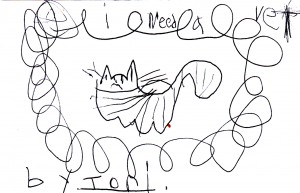Let’s say this first: anytime your infant or young child has a fever of 102°F for twenty-four hours, call the pediatrician. The issue may be minor or serious, and the doctor should help you determine what it might be.
One possibility is roseola, usually not a series condition, which is yet another in the herpes family of viruses. (It is not the same as the herpes strains that cause genital herpes or cold sores.) It’s human herpes virus 6 (HHV-6) and is relatively common in children aged six months to two years.
Symptoms, in addition to the fever (which may last up to a week), may include a cough and runny nose, less appetite and mild diarrhea. Finally, after the fever is gone, generally a slightly raised red rash will appear. It usually starts on the torso before spreading to the rest of the body.
Roseola is contagious, and a child with a fever should be kept away from other youngsters until the fever is gone. Once roseola is at the rash stage the child is no longer contagious and can return to daycare. The incubation period is one to two weeks.
If the pediatrician suspects roseola in your child, you might be asked to treat the fever with age-appropriate doses of acetaminophen (always be sure to check dosing instructions and note that they have changed in the last few years) and keep him hydrated. The doctor may want to talk to you again to make sure the child isn’t sick with something more serious.
You can find out more about roseola in the two articles from which our research was drawn, here and here. Both articles were published by the American Academy of Pediatrics.
© MBS Writing Services, all rights reserved

